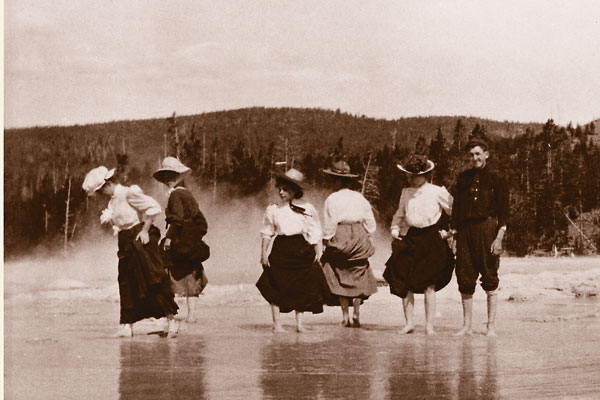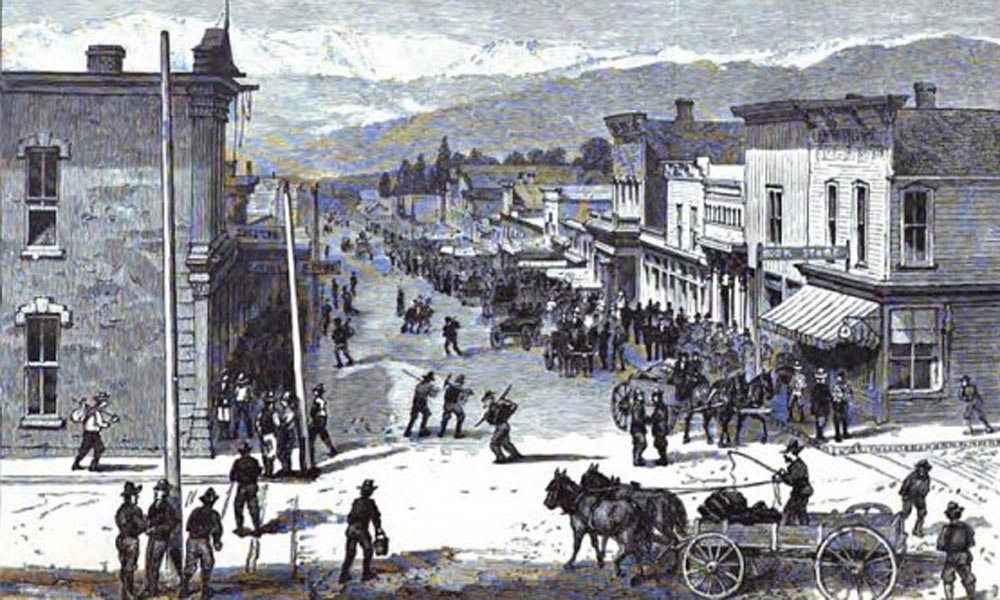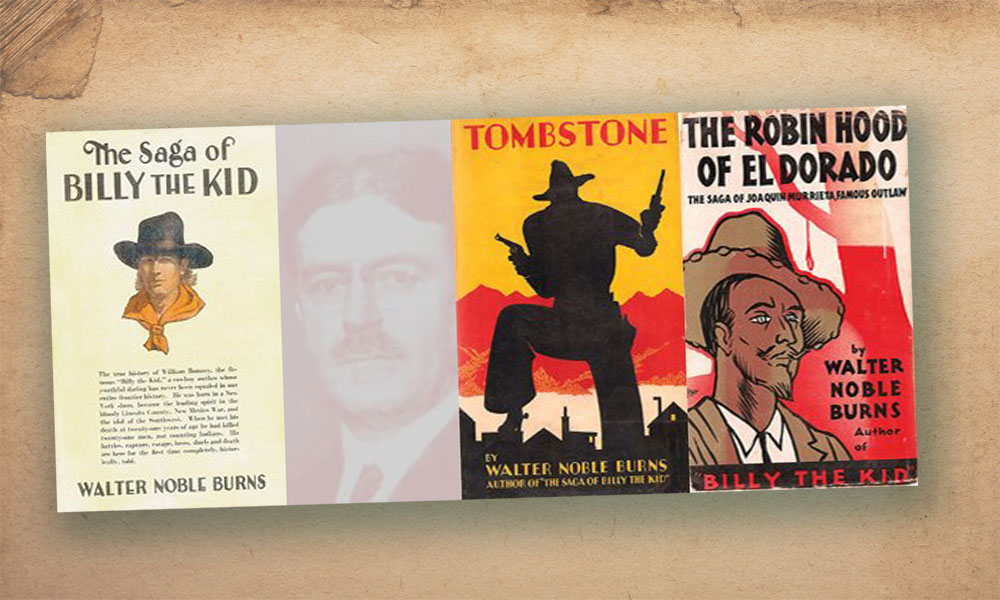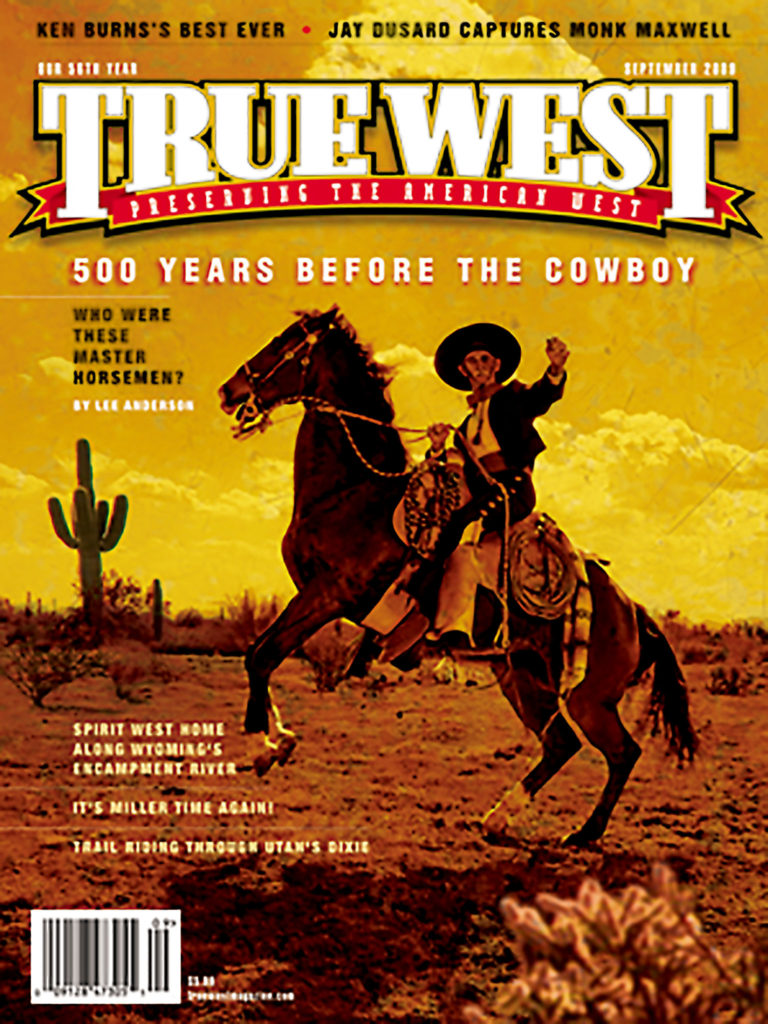
Ken Burns is more than a chronicler of American history and culture.
As early as 1981, when Burns presented his film on the history of the Brooklyn Bridge, he began developing a reputation as a significant figure in the world of documentaries. He followed up with features on Huey Long (1985), the Statue of Liberty (1985) and Congress (1988).
But when his five-part, 11-hour series on the Civil War was broadcast, like most of his works, on PBS, in September 1990, Burns became a brand, the name above the title, and the man whose works would provide a high-water mark for any similarly serious study. You’ll see the “Ken Burns Effect” in a variety of media applications, where still pictures can be panned or processed for maximum dramatic effect in video presentations. Unfortunately, home documentarians still have to provide their own soundtracks and narration.
Burns followed The Civil War with, among other efforts, the nine-part Baseball (1994), the 19-hour long Jazz (2001) and a seven-part series covering World War II, The War, broadcast in 2007.
From September 27 through October 2, audiences will see Burns’s The National Parks: America’s Best Idea, a six-part documentary on PBS. The places he visits within the episodes of this series are so spectacular, they ought to be seen on an IMAX screen. Better yet, as far as Burns is concerned, they should inspire audiences to actually visit the national parks in person.
I met Burns on a blustery summer afternoon at the Tempe Center for the Arts in Arizona, where he was setting up an evening presentation of a portion of his National Parks series. Burns, who I had spoken to some years before, on the telephone, was, in person, fixed, focused and incredibly smart. He was determined to make certain that the show proceeded with the kind of clockwork precision that most identifies his film work.
But he was also clearly ideologically determined to express, in this work as in his others, a lesson to his audience about values as seen through the prism of history. The national parks represented something even more fundamental in theme, something more personal, than his earlier visits to sports, war and music.
It may be safe to say that The National Parks is Burns’s best work.
Ken Burns: Much of our presentation tonight centers on the Grand Canyon, which is, according to the Hopi creation myths, where the first people came out of.
True West: A considerable climb.
As one person, who wrote about hiking down the Canyon, put in her journal, “seven miles down and 107 miles up.” I thought that was a pretty accurate description.
I’m astonished by those who ventured into these inhospitable places to make a life for themselves.
I still marvel at that. I get it in Phoenix, where there’s air conditioning and services. But as you travel through, say, northwestern Arizona, and you see the severity of the landscape and the unrelentingness of not only landscape but of climate—it takes a certain kind of character to say, “I wish to be in this environment.” How does this happen? There’s something kind of contrarian in the human DNA I guess that permits you to do this.
There’s something ultimately contrarian about the national parks themselves, because we’re normally an acquisitive and extractive people, all human beings are, but Americans particularly. To have the foresight to go against the grain and say, “I think we’re going to save this place, and we’re going to save it forever and nobody’s going to be able to do anything to it—dam it or mine it or chop it down,” that’s the story of our film.
It isn’t a travelogue; it isn’t a nature film. It’s the story of how these parks came about and the huge battles against that relentless tide of development and commercialization, and the political battles. It’s almost entirely a bottom-up story. We often give credit just to the few top-down people, the John Muirs and the Teddy Roosevelts. So to me, one of the fascinating and unexpected things of working on this project is how many people—African-Americans, Latinos, Asian-Americans, women, Native Americans and émigrés from Japan—fell in love with the place and worked their entire lives to save it. Those stories are there without a shred of political correctness, because they’re central to telling the stories of how it happened, and they’re ordinary, so-called ordinary, people, in addition to the John Muirs and Teddy Roosevelts and John D. Rockefeller Juniors.
This documentary, like your others, is designed to re-acquaint many of the viewers with something they seem to have lost touch with.
Yes. There’s the assumption that the parks have always been there. They haven’t. That there’s always been somebody taking care of them, the National Park Service. There hasn’t been. The National Park Service doesn’t show up until the middle of our third of six episodes.
I think no one understands the dimensions of the story. This is about ideas and individuals in a historical narrative that will introduce you to four or five dozen people—a few of whom you’ve heard of before, most of them you haven’t—and they come from bottom-up backgrounds, male and female.
There’s George Melendez Wright (1904-1936), a biologist for the Park Service who reminded people that we were treating these parks as if they were zoos, feeding the bears at garbage dumps along the side of the road. He said the bears should be allowed to live out their existence unaided by humans, and that we shouldn’t be killing the predators—this is early in the 1920s and early ’30s.
There’s a huge prescient guy, Sir Lancelot Jones, the son of a slave, who refused to sell to developers in Biscayne Bay and make a fortune, and instead gave his land to the United States, so it became a monument and then later a national park.
Marjory Stoneman Douglas, a reporter for a Miami newspaper, helped save Florida’s Everglades.
All these people, every single park, has somebody unique: Native American, Hispanic, Asian. Horace Kephart, a guy who had lost his family—his wife and six kids—due to alcoholism, decided to hide out in the Smoky Mountains, and he began to write. He wrote the established guides on camping in the wilderness in America. He and Japanese immigrant George Masa—who worked his way up from the laundry room at one of the tonier hotels there in Asheville, North Carolina—started taking photographs. His photographs and Kephart’s words became the essential basis for the creation of what is now the Great Smoky Mountains National Park.
It’s just an amazing, amazing collection of stories. Ever been to Alaska?
No, I have not.
There are rivers that are called braided rivers. They have huge, almost alluvial, wide banks, filled with rocks, not big boulders, but rocks. The water at any given time, except in floods, flows in these little channels, so it’s easy to walk over; but it may be 100 or 200 yards wide, so they’re called braided rivers. I’d like to think that we took these four or five dozen people and inter-braided their stories as the idea of the parks evolved, set against the backdrop of some pretty great, spectacular scenery.
What I find remarkable is how people who didn’t necessarily have the ear of anyone of great wealth or high office were able to make the difference.
That’s why it’s democracy applied to the landscape, because it actually worked. Wallace Stegner, the writer and historian, said the national parks are our best idea, which gave us the subtitle of our film. Now you could make an argument, as we do instantly in our introduction, that the best idea is Thomas Jefferson’s. But once you start the country, once you establish this thing, you could do no better than the national parks.
In point of fact it does represent a kind of participatory thing, and it’s all the way through. Have you been to Dinosaur [National Monument] up in Utah, where the Green and the Yampa Rivers are? Just an amazing, amazing place. And in the 1950’s they were going to put a dam, and there hadn’t been a dam in a national park—there’s only been one, and that’s Hetch Hetchy, which John Muir fought all his life to stop—and it didn’t happen.
In the case of Hetch Hetchy, San Francisco wanted the water; they took it. But Hetch Hetchy became a rallying cry, and a whole conservation movement was born in response to it. There hasn’t been a single dam since. And here was one being proposed in the ’50’s. So what we consider the modern conservation movement coalesced around that dam, in what was called Echo Park, a part of Dinosaur National Monument, and [the movement] stopped it. It’s because the Speaker of the House could not believe the amount of mail that he got, running 99-1 against it.
So now we have dams outside of the national parks, and Glen Canyon [Utah] certainly alters the rage of the Colorado within the Grand Canyon, making it a hell of a lot cooler, because the water that’s let down out of the dam is from the bottom. But it’s outside the park; it’s not in the park.
Have the national parks been a lifelong fascination for you?
Let me put it this way: I’ve been telling stories about American history for 35 years. What you get to understand is that there are two central sub-themes of American life that have been there all the time. [One is] Race. I need only point to the recent presidential election. Or the existence of slavery, which caused the Civil War. Or the only art form we invented, Jazz, born in the African-American community. Or the finest moment in the history of baseball when Jackie Robinson makes it truly a national pastime, to tell you that race is an ever-present dynamic. It’s always there.
But so is the Land. We’re the first mobile country. Most Europeans could spend 20, 30, 40, 100 generations living on the same patch of land, working it as a serf or owning it as a master. We moved around a lot. So a lot of who we are develops out of our relationship to the land and movement, and particularly the mythology and the reality that collides in the West. We invent our myths about ourselves. A lot of what is true about ourselves, how difficult it is to look at, occurs in the West.
This is, of course, a subject of particular interest to our readers.
We did a whole series that came out in 1995 called The West, and that is in every episode, the discussion of the intersection, a sometimes tragic intersection, where the best of us met the worst of us, and nothing was left unchanged.
But over the last 30 years, as you come in contact with the land, Dayton Duncan—who is the coproducer and cowriter—and I just kept talking about how the best experiences we were having was in the national parks. Tell me a place where you can see things exactly as they were—not just 150 years ago when TR [Teddy Roosevelt] or John Muir might have looked at it, but 150,000 years ago. There’s nothing, nowhere else, except the national parks, where that is true. Not to say that this landscape isn’t constantly changing, but you can look and it’s preserved the way it was. You can see almost primeval America, or go back to the Pleistocene and think that you’re there, as John Muir said, that this is the “morning of Creation….” So we realized that the apotheosis of our interest in the land would be in telling the story of how the national parks came about.
Are we neglecting these resources as we grow more insular and home-bound?
We were heading very quickly toward 300-million attendance [in the parks], but it leveled off, and it’s now gone down. One reason why is that we live in a society that does not have a real relationship to the land. It is further complicated and distracted by all these electronic things that convince us that a virtual reality is much more satisfactory than an actual reality. We drive in our car alone. We surf the net alone. We watch TV alone. We listen to the radio or our iPods alone. We’ve got all these things in front of us that distract us. What’s happening is a huge existential moment, not just for the United States but for the world, because existentialism is essentially a negotiation between being and doing. If you are doing neither; if you’re living in a virtual world—
Neither being nor doing?
It’s neither being nor doing, because if you’ve got kids on Facebook or twittering their bowel movements—[laughs]—this is not life! This is Plato’s cave, only we’re not just talking about shadows on the cave anymore. We’re talking about digital phone copies e-mailed to a friend, uploaded to YouTube—it’s some distance from the shadows on the cave, which Plato suggested was not the real world that we needed to apprehend. So we’re at a big moment. It comes down to a very simple thing: it’s just harder to get everybody into the minivan to take that family vacation that forges the memory.
My grandfather piled my dad and his two brothers and my grandmother into the car, and they traveled the national parks. My dad took me to Shenandoah National Park when I was a little boy, and I’ve taken my three daughters to national parks. In that is not just the immensity of the geological arc of the Grand Canyon, the 1.7 billion years, but three generations of the Burns family, which are intimately, emotionally connected to this park.
After making two films on wars that produced a lot of tears in the viewers, and the makers, this film has produced more emotional responses than any other film I’ve ever made.
Why do you think that is?
Because of people who have had that [experience], or have missed it, or a combination of both. But is is also some loss of a sense of who you are, defined, not in your regular life, but in these moments where you had a chance to spend your time camping with your family or doing something like that.
The history is moving too, by the way. The ordinary people who saved these places, how these ideas grew. Ideas have a power and force to them that they’re good, and we’re suggesting this is America’s best idea. So I think it gets you on all these levels: the family, history, the sense of a good idea and then the majesty of the places, along with the stories of the people who helped bring about these places.
Most powerful ideas have mystery to them, but there’s also an element of familiarity. It’s like you’re being reintroduced to something that you already somewhere knew, either archetypally intuited or just a sense that “Ahhh! This relationship is something that I know that I want, but I’ve not been able to articulate that want.”
I’ve always described the emotional archaeology that we’re involved in. It’s not enough to excavate the mere dry dates and facts of the past; one has to provide the glue that allows those shards to be constructed into something that resembles a life that could influence or touch mine.
The greater impact would be somebody staggering into some place like Canyon de Chelly and being struck with awe.
Exactly. That is what this film is. There’s all these paradoxes—that the parks are supposed to be preserved for everybody, but unimpaired for future generations—which create some very real tensions about wearing out the scenery or loving it to death. If you’ve ever been in a traffic jam at Yellowstone or Yosemite or the Grand Canyon, you know what I’m talking about.
Then there’s this other paradox. Of the people we’ve met who are in our film, or the people we’re talking about in our film or the people we’ve shared the film with who have been to a park, they’ve had some experience that can only be described as transformational. That suddenly they woke up, even in just a second, to their insignificance in the face of these big things (which, paradoxically, makes you larger, as opposed to an egomaniac who is diminished, right?). But when you feel your insignificance in the cosmos, it connects you to everything. You touch your best self in that moment, and you are larger.
NATIONAL PARKS BY THE NUMBERS
Number of parks:
391 nationwide, from battlefields and historic sites to full-fledged national parks. Plus 40 national-heritage areas.
Parks area:
— 84 million acres of land
— 4.5 million acres of ocean, lakes and reservoirs
— 85,000 miles of rivers and streams.
Historic structures: 27,000
Archaeological sites: 68,561.
Employees: 28,000
Source: National Park Service (as of fiscal 2008)





